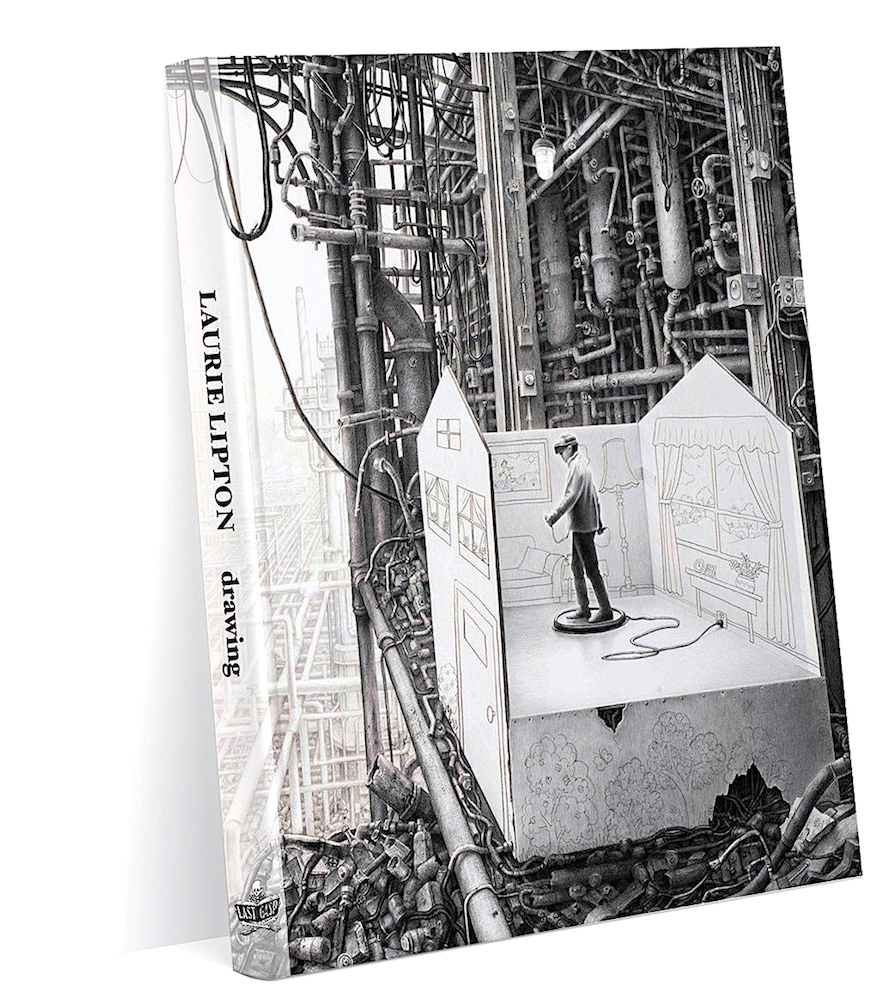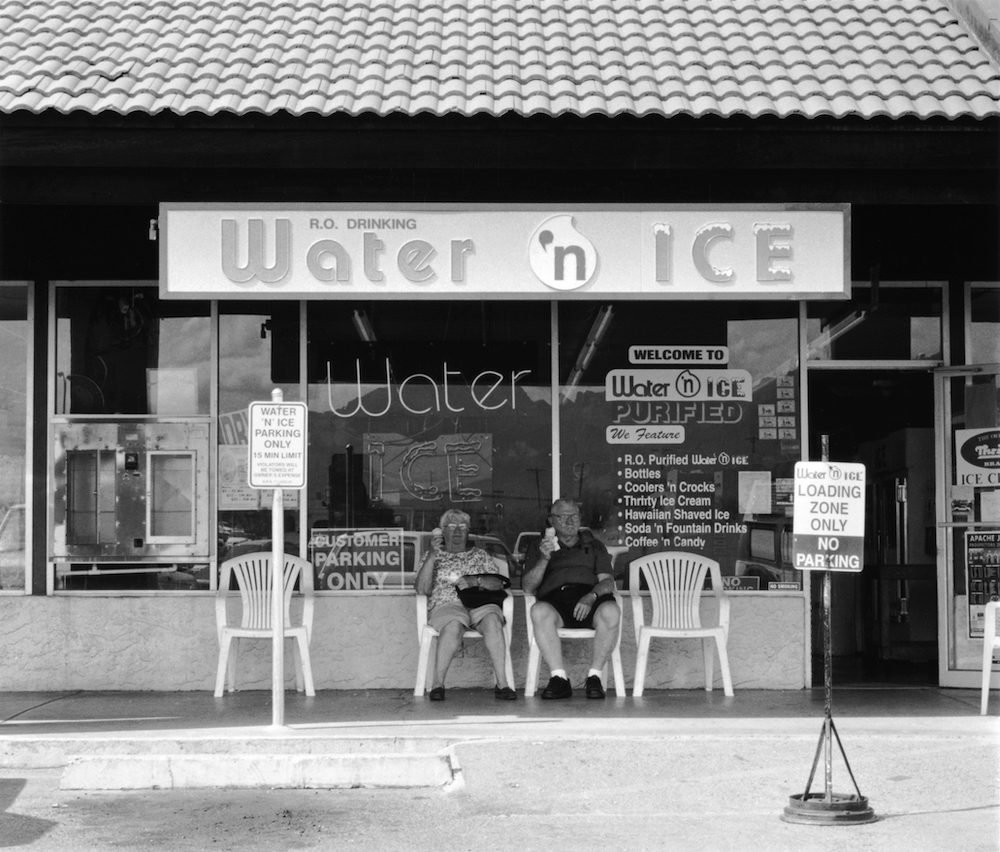The Earth is parched, its water impure. The air is poisonous, awash with industrial effluvia and alive with toxic organisms. Our culture has been radically and relentlessly artificialized, while we are regimented, consumerized, alienated and terrorized. Fortunately, we still have art to heal our wounds, to drive our actions and to provide hope for the future. Today, that work is being done by two books, presenting two bodies of work that are superficially quite different, but deeply and importantly connected.
Sant Khalsa’s Crystal Clear || Western Waters makes available the entirety of a project executed during the period from 2000–02, comprising a record of (mostly) strip mall storefronts, unassuming shops dispensing “clear,” not to say “crystal clear,” “pure” and “cool” water, indeed providing a “perfect oasis” of “living water” in the deserts of the southwest: in fact, mostly just tap water purified by reverse osmosis. These are small meticulous prints meant to be seen as a series, each one evoking a particular instance of what at the time was a relatively new phenomenon (now an $11 billion-a-year industry) providing “good” water to folks who are not able to afford pricey branded attempts to market one of life’s most basic necessities.
The photos were gathered throughout southern California and across a number of southwestern states. Their signage often speaks to an immigrant population (Hispanic, Korean, Filipino); and although the artist’s “debts” to Walker Evans and Ed Ruscha (who provided a succinct foreword) are clear in the formalism of the images, the focus on the iconography of water, on its precarious presence in the desert southwest, and on the intricacy of our involvement with its complex ecology as played out in image after image, is entirely the artist’s own—a hallmark of a loving concern evinced throughout an entire career.

Laurie Lipton, drawing, (San Francisco: Last Gasp, 2022).
Laurie Lipton’s new book is titled simply drawing. The work covers the period 2014–22, but its major concern is surely the cultural effects of COVID lockdown. Since Lipton already posits an embattled humankind enmeshed in a culture maximally mechanized, commodified, digitized and virtualized, her evocation of our struggles to retain both an image of authentic self and a sense of genuine community even in her most naturalistically grounded images, can be truly horrifying (compare Alone In My Home, Socializing and You’re On Mute [both 2021]).
Much of the work consists of a series of meticulous fever dreams whose general parameters have long been present in her work, but which seem here to have gained an intensity, aggressiveness and transgressive violence: they defy description in a confined rhetorical space. When not fragmented, constrained and electro-mechanically transmogrified, her actors inhabit a psychic world ranging from selfie narcissism to apocalyptic and agoraphobic paranoia (compare Binge Watching [2018] and Stepping Out [2021]). Yet, in the final instance, it is the endlessly reiterated masses of Lipton’s lock-stepping skeletal bots—smiling consumers all—that have produced the toxic and arid world to which Sant Khalsa’s photographs speak, of “agua pura,” a cool and shady Eden where one can always stock up on “water and ice to go.”
Crystal Clear || Western Waters
By Sant Khalsa
Foreward by Ed Ruscha
72 pages
Minor Matters
drawing
By Laurie Lipton
112 pages
Last Gasp


